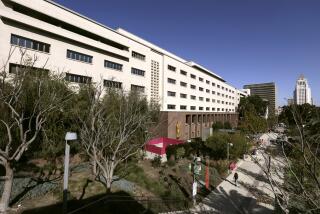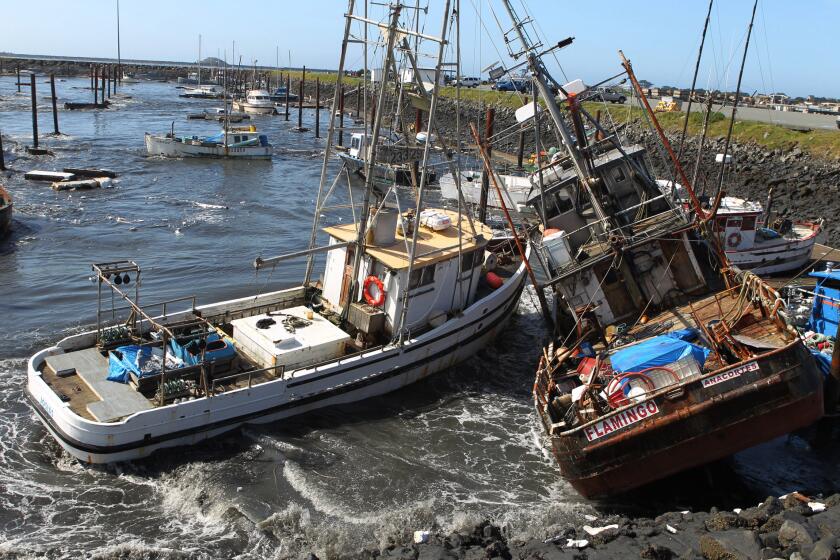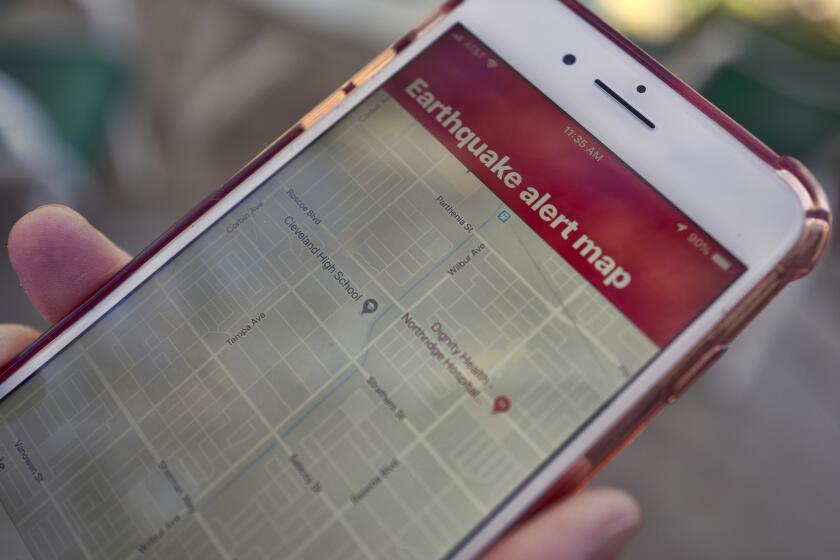Decision on Retrofitting of City Hall Is Delayed
- Share via
The Los Angeles City Council and the mayor’s office would be forced into exile for more than three years as historic City Hall underwent a $242.1-million seismic retrofit if officials adopt a recommendation presented Monday to the Board of Public Works.
After a four-hour hearing on the matter, the board postponed a decision for two weeks, requesting more information about the six options presented by staff and consultants. Among those options are keeping the council and mayor in City Hall throughout the construction project, scaling back the retrofitting efforts, closing the historic building forever, or knocking down the 68-year-old tower and erecting a new City Hall.
Except for barricading the landmark building, all the options would probably cost far more than the original estimate of $92.3 million or the $154 million outlined earlier this year, and would depend on about $140 million in funding from the Federal Emergency Management Agency that has yet to gain final approval.
“It’s a symbol of the city, and it would be a very sad day if we have to tear it down,” Public Works Board President J.P. Ellman said of City Hall. “I consider City Hall to be my home. It’s near and dear to my heart.”
Deputy City Engineer Rodney K. Haraga and Joseph P. Garron, a consultant serving as the “project executive,” told the board that the increased costs stemmed from new projects added to the previous plans to increase seismic safety in wake of the Northridge earthquake. The favored “Option A,” which would cost about $53.6 million more than the staffers had estimated in February, includes increased construction estimates and added money for unanticipated relocation of city offices.
“It brings everybody back into a building that is a safe building to be in,” Haraga said. “It’s do it now and pay for it in one shot, or do it in pieces and pay later.”
Board members hesitated before selecting an option to recommend for the City Council, asking staff members to survey Downtown real estate to estimate the costs of relocating council and mayoral offices and to get more detail about the prospects for FEMA funding.
If the city can show that fixing damage caused by the Northridge quake would cost more than 10% of the price of rebuilding the structure, FEMA would pay about $140 million, city officials said. Otherwise, the federal agency might provide as little as $15 million.
The city also has about $165 million in bond proceeds earmarked for seismic safety, and expects about $34 million from the Historic Bridges Replacement Resource.
Public Works Commissioner Frank Cardenas said that until the full FEMA funding is assured, the only two options the city can afford are fixing the first four floors of the building and leaving the rest unoccupied or closing the building altogether, which would still cost more than $100 million.
Even if the city forges ahead with Option A, City Hall would remain empty for more than three years, leaving the mayor and council members without a home. Together, the mayor and council offices use about 110,000 square feet of office space, officials said, so there is no room for them in City Hall East. Instead, the city would have to lease office space elsewhere, and provide an alternative for the council’s many public meetings.
“It would be difficult,” Council President John Ferraro said. “Moving the City Council and the mayor out of City Hall is pretty drastic. We’d lose this identity for 3 1/2 years.”
Joel Wachs, who heads the council’s Governmental Efficiency Committee, which is overseeing the City Hall project, said he has more pressing questions, such as why the costs have ballooned so much and whether the city can afford to rehabilitate the building at all.
“I have to really question whether, with all the needs we have in this city, it’s worth going ahead,” Wachs said, estimating that the costs will ultimately top $300 million.
More to Read
Sign up for Essential California
The most important California stories and recommendations in your inbox every morning.
You may occasionally receive promotional content from the Los Angeles Times.










